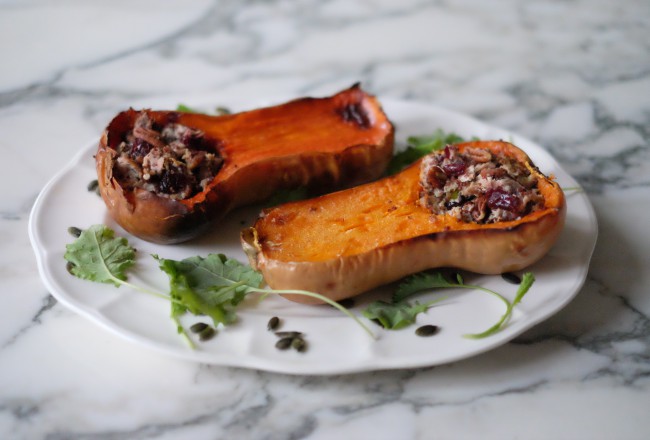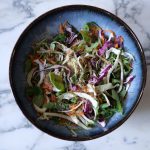So you dutifully switched from eating white rice to eating brown rice several years ago, didn’t you? And you feel like the paragon of health, smug in the knowledge that whole grains are better for you. Well, as it happens, nutrition is a deeply complicated subject. Yes, brown rice is a low glycaemic grain so it can help us to keep blood sugar levels stable but is it as nutritionally dense as we were led to believe? To cut a very long story about rice kernals and anti-nutrients (phytates) short, some research suggests that while brown rice looks more nutritious on paper, it’s bioavailability of nutrients tends to be lower than we expect in comparison to white rice. I met recently with Pooja Mottl, whole foods chef and author of “The 3 Day Reset”, who knows a lot more about this than I do: “while brown rice may have more calcium and magnesium than white rice, you probably aren’t absorbing any more of it in the end”. Shock, horror! All that brown rice I have dutifully subjected myself to.
But panic not, there are a couple of tricks to get around the phytate issue so that the manifold benefits of brown rice become more readily available. Pre-soak brown rice to reduce the phytic acid content: Add warm water to cover the rice (use 2 cups of warm water to 1 cup of rice) and for every cup of water, add one teaspoon of apple cider vinegar in order to create an acidic environment. Tightly cover and soak overnight (or up to 24-hours). Pre-soaking in this way reduces the cooking time of brown rice – always good when you have a hungry audience. Accompany your brown rice with a vegetable (or fruit) that is rich in vitamin C to counteract the inhibiting effect of phytic acid on the absorption of iron and other minerals, such as spinach, broccoli or red pepper.
Side-tracking from the whole white vs brown debate, and since I like to make my food as nutritious as possible, I have used black rice in the Thai inspired recipe below. Black rice is a type of brown rice but is even more nutritionally dense, particularly in antioxidant content. Anthocyanins are antioxidants that provide the dark colours of many fruits and vegetables, such as blueberries and red peppers. They are what make black rice ‘black’. Scientific research suggests that the dark plant antioxidants, which mop up harmful molecules, can help protect arteries and prevent the DNA damage that leads to cancer. In fact, black rice contains one of the highest levels of these heart disease and cancer fighting plant compounds in food, higher even than blueberries, but with lower sugar and much more fibre. Centuries ago, black rice was known as Forbidden rice in ancient china, because only nobles were allowed to eat it. Eat like a noble and prepare yourself this yummy recipe. It is so delicious, and I have tested it on men too – this would be my dinner party staple if I wasn’t too busy researching, reading and writing for this blog to actually host anything ever!
COCONUT SEABASS, BLACK RICE & SPINACH
Ingredients
- 2 cups black rice (pre-soaked as detailed above if you have the time)
- 2 seabass fillets
- 2 bags fresh spinach
- 1 tbs olive oil
- 1 tbs coconut oil
- 1 large or 2 small onions (any work, including shallots or red onions)
- 1 cup chicken or fish broth
- 1 x 200ml tin coconut milk (I used light, which is a huge calorie saving for minimal taste/nutrition loss)
- Handful spring onions, chopped diagonally
- Handful coriander, finely chopped
- 1 inch of ginger, peeled
- ½ tbs red Thai curry paste
- Pinch coconut sugar
- Salt and pepper to taste
- 1 lime – half juiced and half in wedges
- Serves 2
Method
Pre-soak black rice as detailed above. While it is cooking, you can make the spinach and fish.
Heat the olive oil in a large wok pan over low heat. Add the spinach slowly while stirring with a wooden spoon until it just begins to wilt down. Split the spinach on two serving plates – wide soup bowls work best for this dish.
Return the wok to the heat and add the coconut oil. Saute the onions and half of the spring onions for a few minutes until slightly browning. Add the chicken/fish broth, curry paste, coconut milk and coconut sugar. Bring to a simmer and reduce the heat as much as possible so the mixture is just simmering. Simmer for around 10-15 minutes, until the sauce has reduced by half. Add a pinch of salt (or try the sauce and season to your taste). Remember to keep checking your rice! While the sauce is reducing, rub the seabass fillets with the ginger. Once the sauce has reduced by half, carefully place the seabass fillets and the ginger into the sauce, spooning the sauce over the fish as it cooks. Allow it to poach until the fish is cooked through (2-5 minutes, depending on thickness). Discard the ginger.
Carefully place each seabass fillet onto the spinach in the serving plates. Add the remaining spring onion, most of the coriander and lime juice to the sauce. Ladle or pour the sauce over the seabass and spinach. Serve the rice on the side and garnish the plates with any remaining coriander and the lime wedges.
Photo credits: bowl is part of the Halo range by Denby









